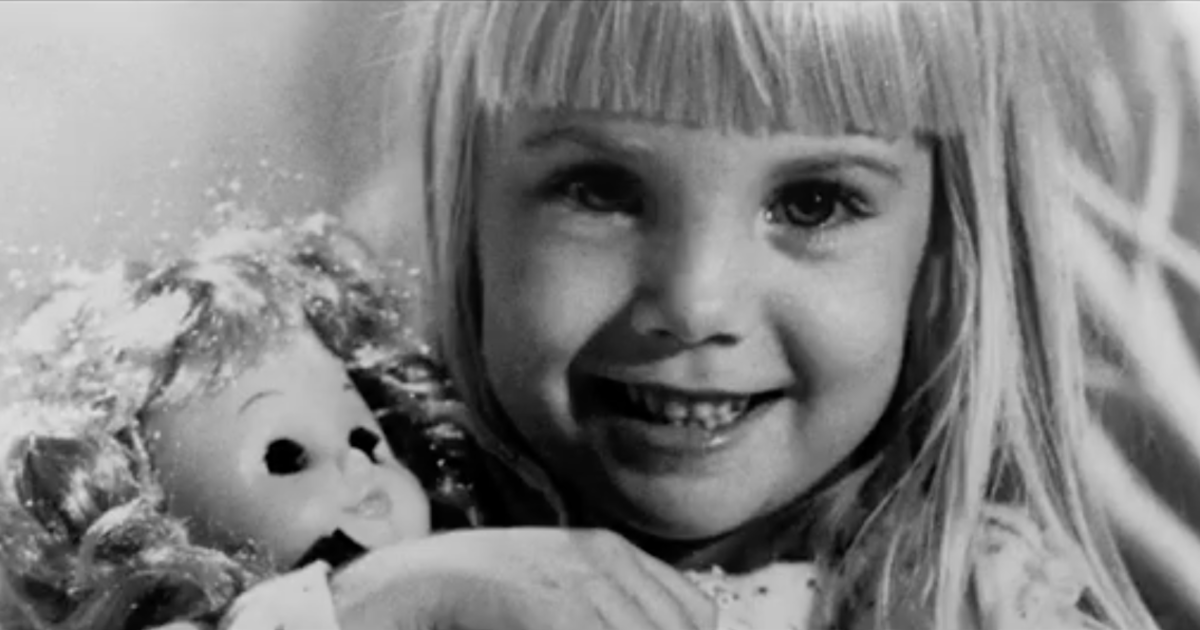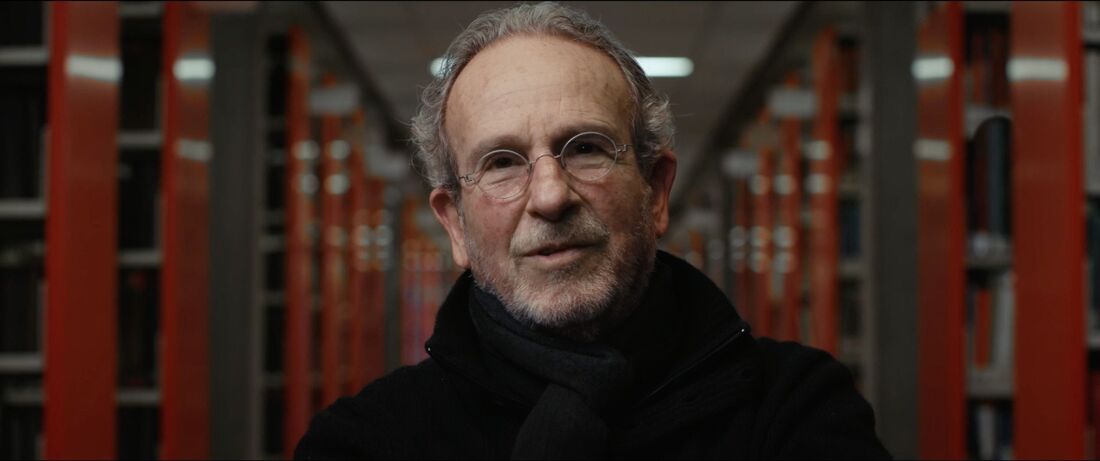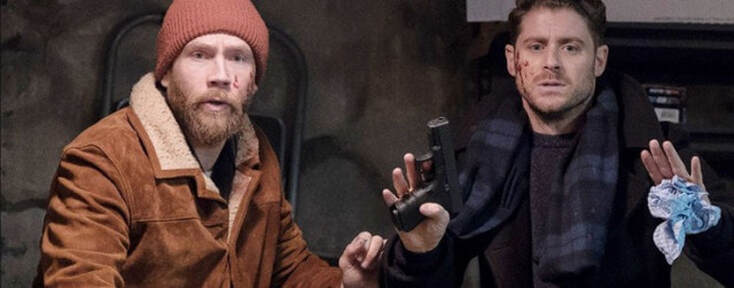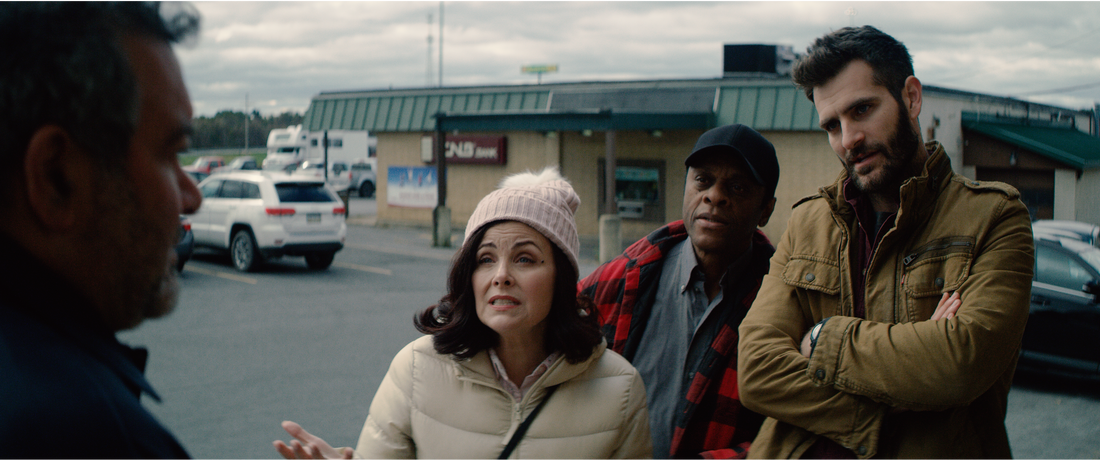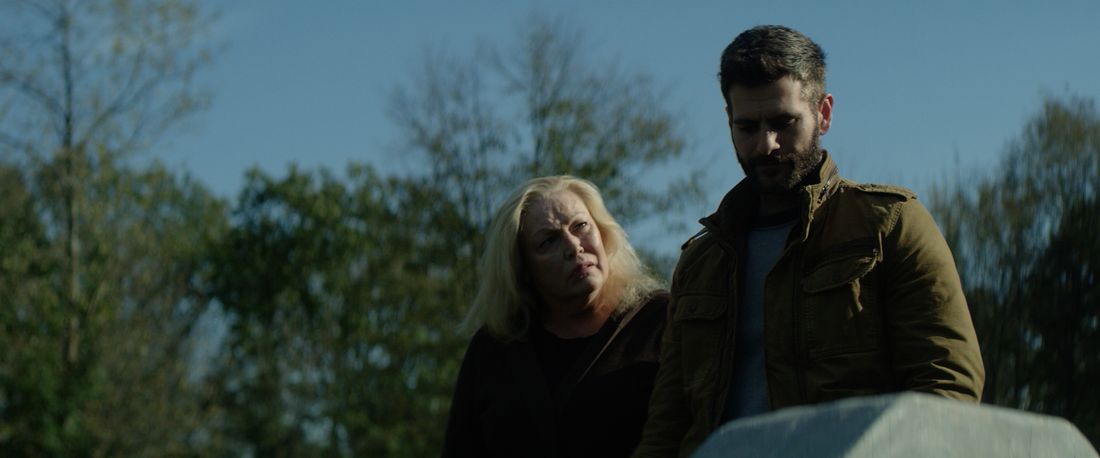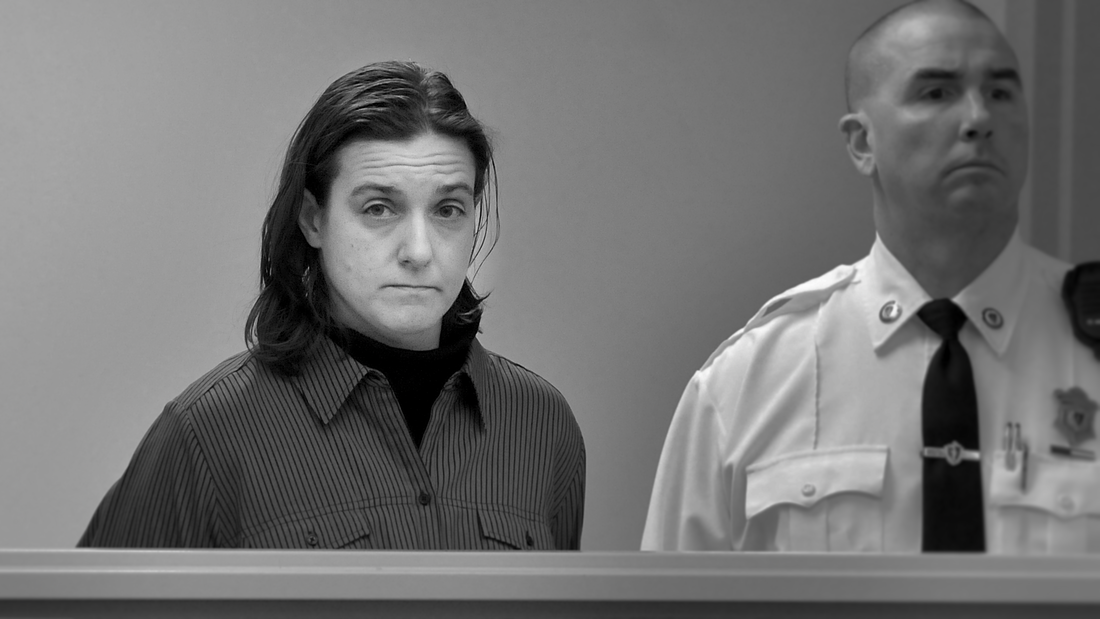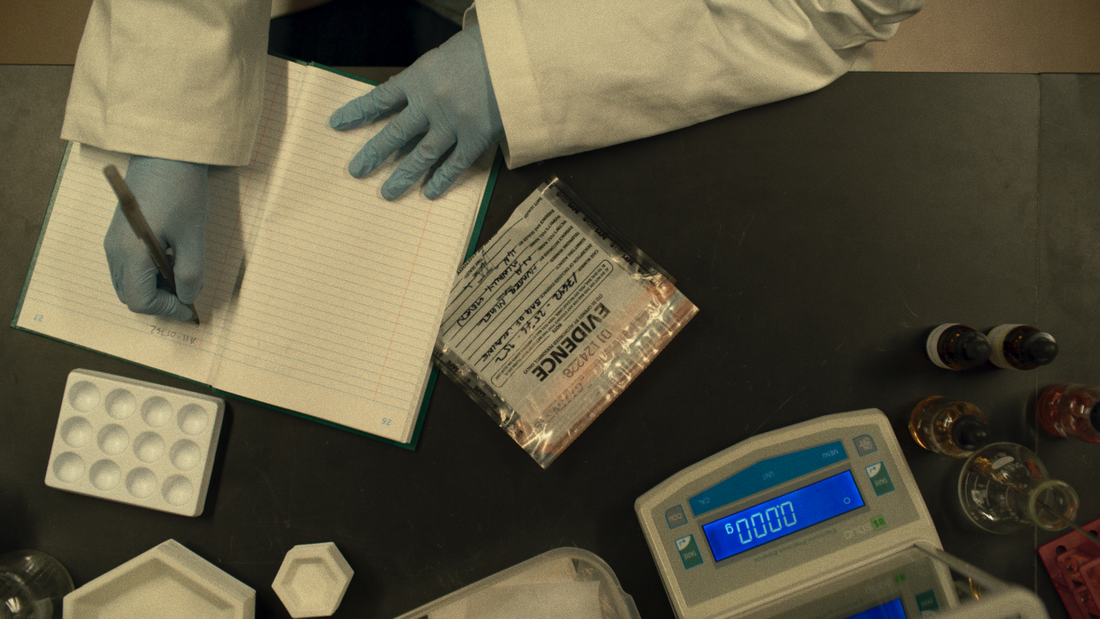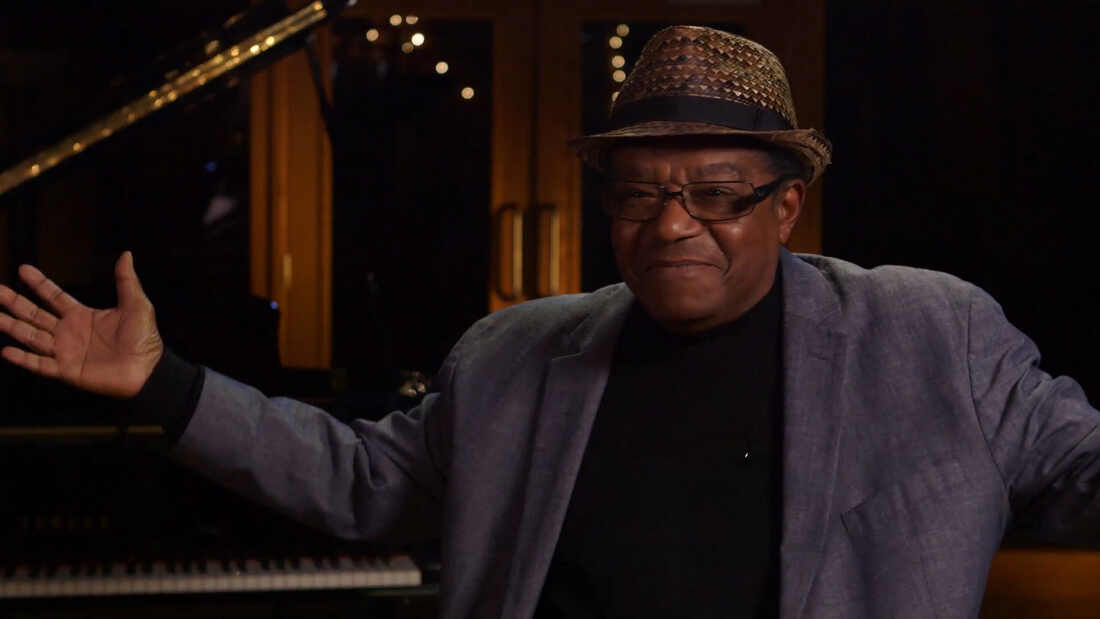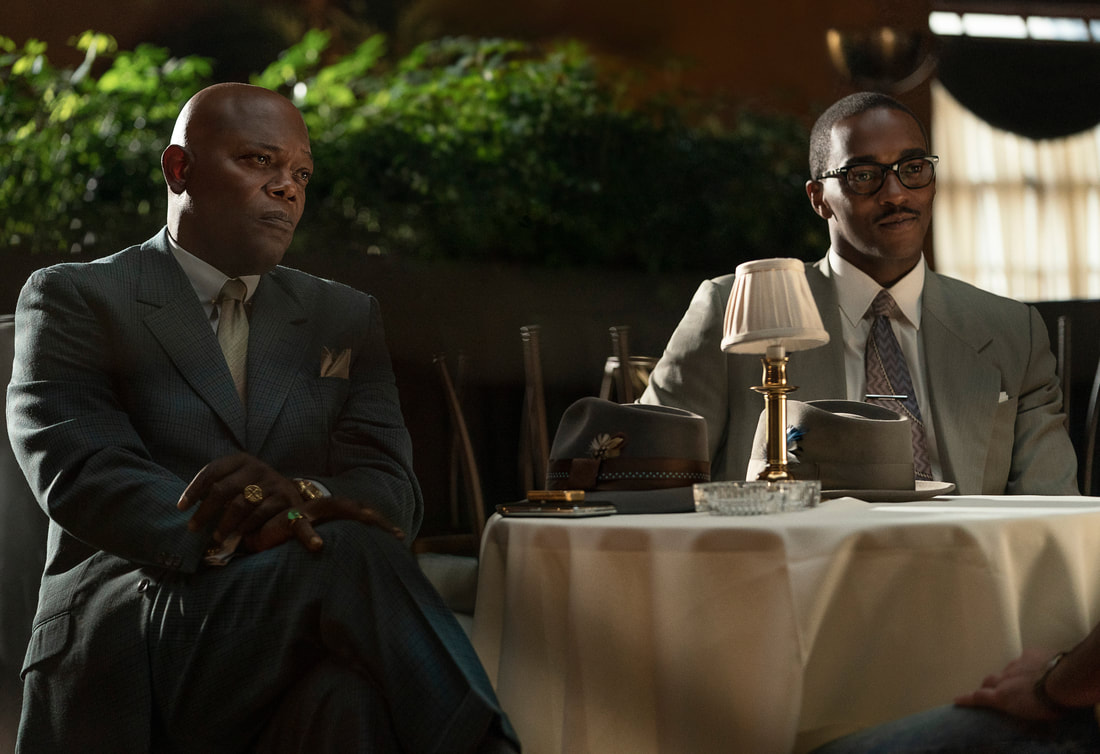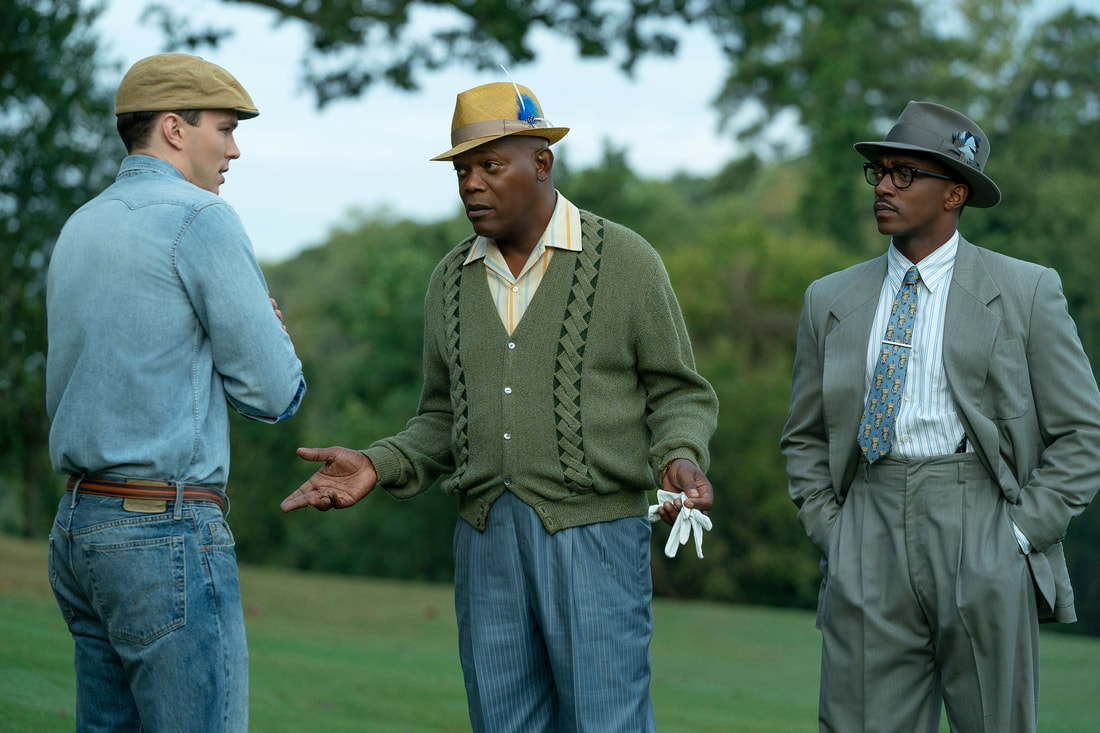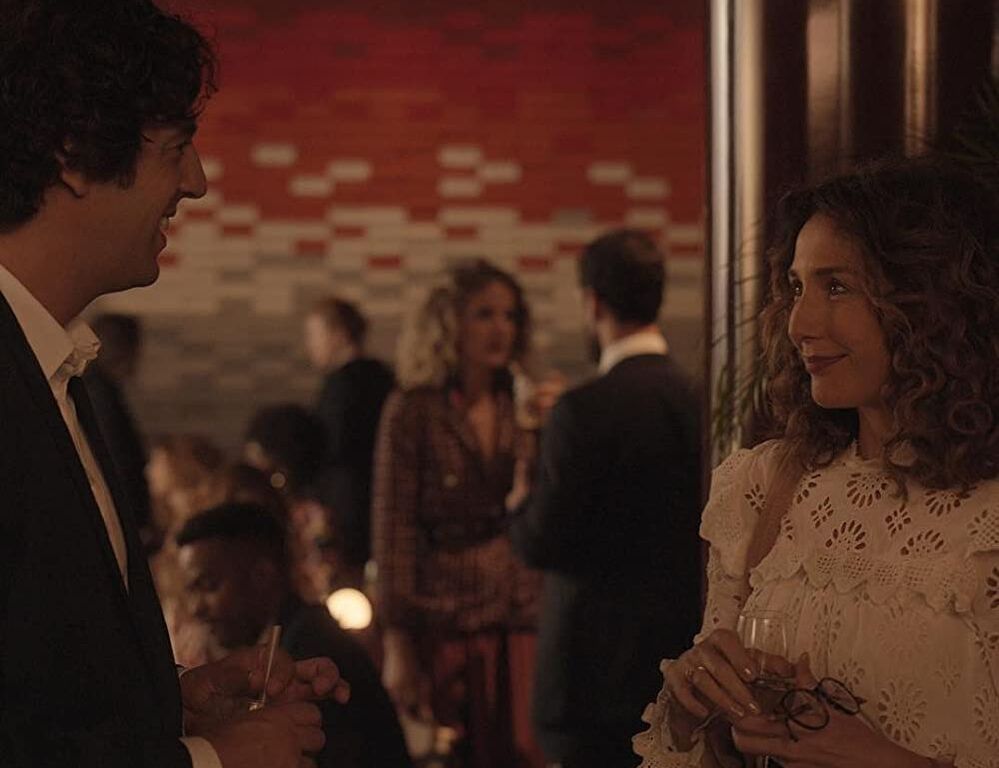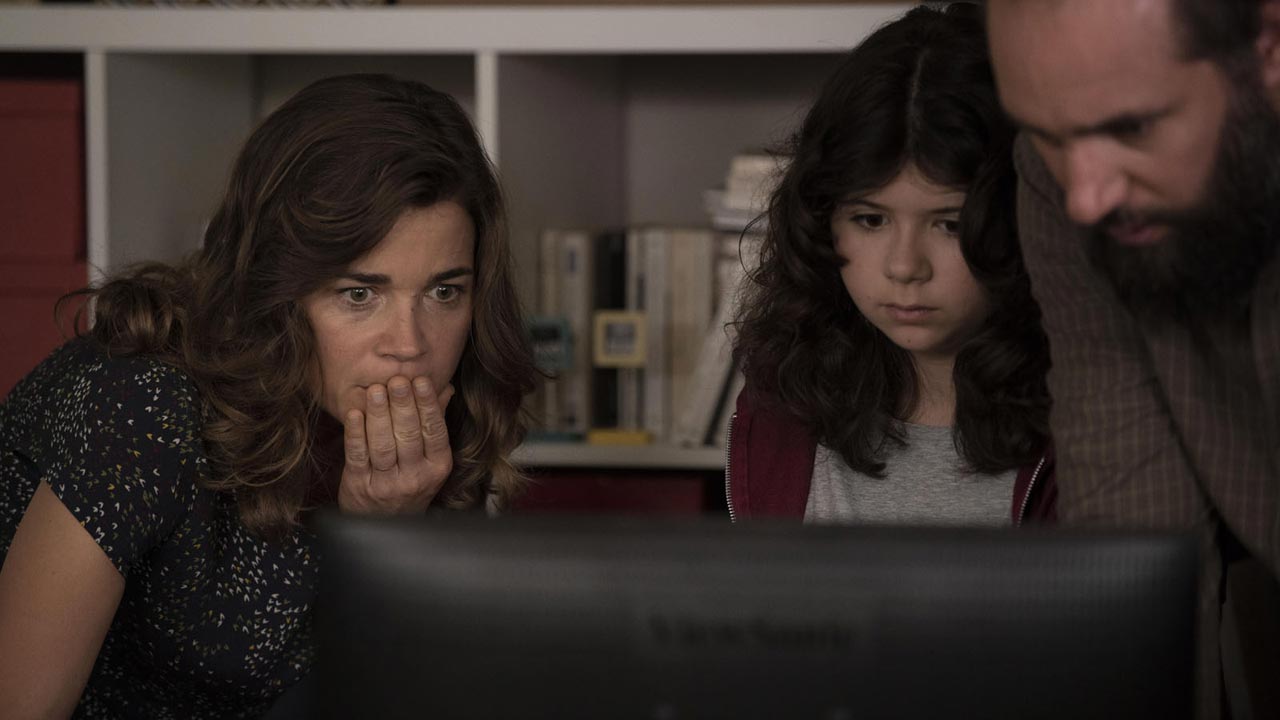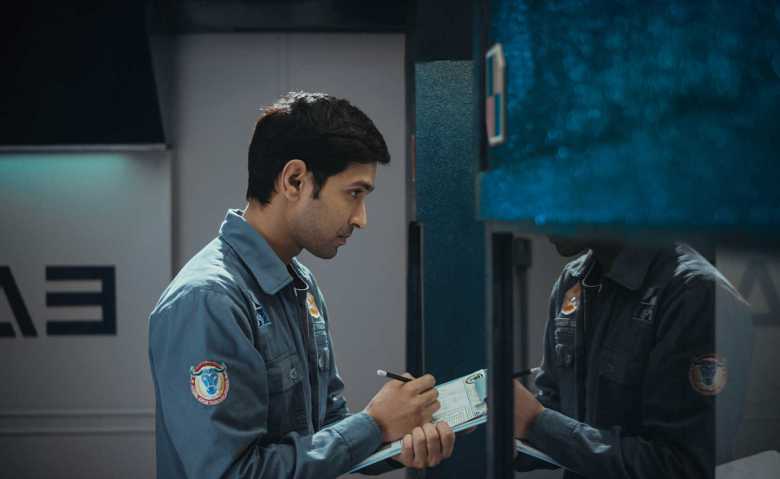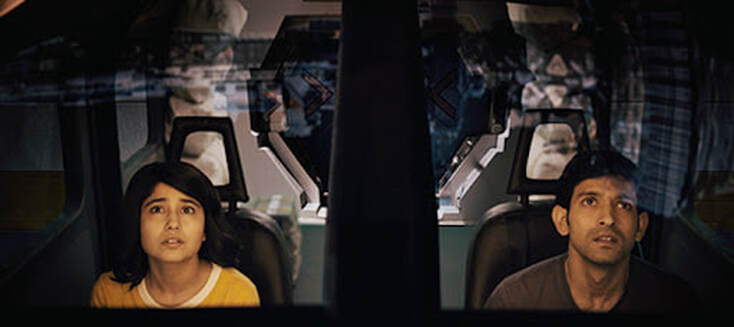|
Review by Sean Boelman
Directed by Jay Cheel, Cursed Films is a new five-part documentary series taking a look at some of the most notoriously unlucky productions in all of horror movie history. While the premise will undeniably be intriguing for anyone who is interested in the horror genre, it doesn’t offer much in the way of new or revelatory information.
Each episode of the series explores a different movie that suffered from mysterious circumstances occurring during and after production, leading some of those involved to believe that the films were “cursed”. The validity of these “curses” has been debated, and the purpose of the series is to address this discussion. The two episodes of the documentary that were screened for press centered around the films Poltergeist and The Omen. Both rank among the most iconic horror movies of all time, and fans will undeniably be familiar with all of the weird happenings associated with the films for which they would become notorious. As a result, much of the series’s information will already be known by its target audience. The episode dealing with Poltergeist is particularly shallow, as it doesn’t offer much beyond a basic recap of the bizarre fates that befell the cast and crew. While the episode is a nice and respectful tribute to Heather O’Rourke, who passed away tragically at a young age, it doesn’t feature the perspective of anyone that audiences would really want to hear from (apart from Poltergeist III director Gary Sherman).
That said, the episode does feature a brief segment with interesting discussion of the psychological foundation of curses and how people use them as a means of justifying experiences that they can’t explain. Hopefully the rest of the series continues these interviews with expert psychologists that offer a scientific approach to the series’s concept.
On the other hand, the episode on The Omen explores a completely different aspect of curses — the occult side. This is probably the most unique and intriguing information that the documentary has to offer, as Cheel interviews black magicians that present their take on whether these events are supernatural or mere coincidence. Cheel does a good job of incorporating footage from the movies that the episodes are exploring. Given the seeming lack of cooperation Cheel had from relevant parties (neither Steven Spielberg nor Tobe Hooper was interviewed for the Poltergeist episode), it is impressive that he was able to get access to the materials needed. Although Cursed Films may not be the in-depth exploration of superstition that audiences will want, it is mostly entertaining nevertheless. With other episodes focusing on The Exorcist, The Crow, and Twilight Zone: The Movie, it will be interesting to see where the series goes from here. Cursed Films debuts on Shudder on April 2, with new episodes on April 9 and April 16. Two out of five episodes reviewed. Rating: 3/5
0 Comments
Review by Sean Boelman
Starring and directed by Jon Abrahams (Scary Movie), Clover is a new action-comedy paying homage to classic mobster movies. However, apart from an interesting and unexpected third act twist, the film never manages to find its footing because it feels constantly unsure of what it wants to be.
The movie follows two brothers who are sent on the lam with a teenage girl when she kills the son of a powerful mob boss and they are blamed for his death. For a majority of the film, it’s very predictable and leans heavily on tropes of the genre. However, writer Michael Testone redeems himself with a third act that, while not entirely fitting within the rest of the movie, is much more entertaining than anything that came before. Perhaps the biggest issue with the film is that its tone is wildly inconsistent. At times, it’s obvious that the movie is a comedy as the two leads are cracking jokes with each other and the film is a lot more playful. Yet there are other parts of the movie that are overly dark and serious, some to the point of being disturbing. It would have been beneficial for the film to pick one tone and stick to it. The pacing of the movie is also aggravating. It takes quite a while for all of the gears to get turning, and while everything eventually comes together in the end, the process of getting there isn’t entirely satisfying. There are simply too many moving parts in this story, and not enough time to build a world around them, and as such, the film falters.
That said, the movie does a very good job of making the audience sympathize with the characters. Granted, there are a lot of archetypes in play, but it is almost fitting given that the film functions more as a parody of crime movies than anything else. Still, Testone writes them in a way that is charming and endearing.
But alas, the actors in the film don’t do a good job of working with the solid foundation they are given. Abrahams and his co-star Mark Webber have solid enough chemistry, and this is a majority of what makes the movie move forward. Everyone else in the cast has wooden delivery. Young actress Nicole Elizabeth Berger’s performance is particularly rough, although that may be due to the fault of poor direction. Abraham also had mixed results with the film on a technical level. Much like the movie couldn’t decide what tone it wanted to follow, it couldn’t decide what era in which it wanted to take place. Anachronisms between the material and production design can be found galore. Additionally, the film relies a bit too heavily on mediocre gore effects. Clover is saved from being a waste of time by its solid ending. Even though this obviously seems like a passion project for Abrahams, it didn’t pan out, as there are more misses than hits in the script and execution. Clover hits VOD on April 3. Rating: 2.5/5
Review by Sean Boelman
Every once in a while, there is a film that is so bad that one can’t help but revel in the absurdity of what they have just seen. Writer-director Spencer T. Folmar’s didactic action-drama Shooting Heroin falls into that category as one of the most hopelessly misguided movies to have gotten the green light in quite a while.
The film follows a group of small-town residents grappling with the burden of grief from loved ones who lost their lives to drugs as they begin to use violent methods to combat the heroin crisis. Although it is obvious that Folmar is trying to communicate the urgency of the heroin epidemic, particularly as it relates to youth in America today, it seems in poor taste to bring back the idea of the “war on drugs” when society is dealing with more pressing issues involving violence. Folmar’s movie is a tonal mess all-around, and as a result, it’s hard to take the film seriously. (The title makes it even harder to approach the movie with a straight face because of its absolutely horrible pun.) Portions of the film want to be an earnest character study about the human impact of drug addiction, and then there is an ATV chase scene thrown in, seemingly in an attempt to keep the audience’s attention. It wasn’t surprising to learn that Folmar has done most of his work to this point in inspirational religious-themed movies. While this isn’t the type of wholesome, family-friendly entertainment that the genre usually offers, it shares many of the overly sentimental and preachy characteristics that are notoriously problematic.
The character development in the film is also lackluster because it tries too hard to milk emotion out of the audience. There are some moments that have the potential to be hard-hitting, but for the most part, the movie doesn’t earn any emotion from the viewers. Only those who fall victim to the most manipulative of tactics will feel anything from this film.
As expected, the movie features a lot of no-name actors with a few appearances from C-list celebrities (Brian O’Halloran of Clerks fame is probably the biggest name in the cast). The thing that unifies all of the performers in the film, though, is that they consistently overact, another quality that seems to have transferred over from Folmar’s previous work. On a technical level, the movie is about as unprofessional as one would expect. The cinematography and production design are obviously very low-budget, and distractingly so. As a whole, the film looks and feels painfully cheap, but the extent to which it looks terrible is often laughable, giving the movie an added “so-bad-it’s-good” factor. Shooting Heroin is undeniably going to be one of the worst movies of 2020, but there’s something about it that demands to be seen, for better or worse. Connoisseurs of terrible cinema will surely want to check this one out. Shooting Heroin hits VOD on April 3. Rating: 0.5/5
The latest true-crime docuseries from acclaimed documentarian Erin Lee Carr (At the Heart of Gold: Inside the USA Gymnastics Scandal), How to Fix a Drug Scandal seems destined to be Netflix’s next sensation. However, even though the story is truly fascinating, the approach that Carr takes in telling it is often unsatisfying.
The film tells the story of a scandal in Massachusetts in which two crime drug lab analysts were charged with tampering with evidence, one of them soon being discovered to have used the drugs she was tasked with investigating. This is the type of so-crazy-it-must-be-true story that Netflix docuseries have become known for in recent years, and on that front, it certainly delivers. That said, the series is not particularly well-paced, and as a result, it will not rank among the most entertaining that the service has to offer. The four episodes of the series clock in at a total runtime of a little under four hours, but at least an hour of that runtime is dedicated to unnecessary subplots that aren’t particularly compelling. The main subject of the documentary, Sonja Farak, has what is undeniably the most interesting story of the bunch. Her tragic rise and fall from respected forensic scientist to criminal is the type of infotainment that true-crime-loving audiences have come to expect. This portion of the documentary also allows for some interesting exploration of the flaws of the American justice system.
Had the series focused exclusively on Farak, it likely would have been great, yet Carr seems to feel the need to present the entire story rather than just the important details. As a result, almost an entire episode is dedicated to Annie Dookhan, another analyst who was discovered before Farak. While this is important context, ten or so minutes would have sufficed, an entire episode being an absurd amount of time to dedicate to this portion of the story.
Then, in the final two episodes, Carr includes an aside about one of Farak’s victims and the lawyer who helped bring justice to all of the people she potentially wrongly convicted. Although this is the most emotional portion of the series, too little time is spent developing the audience’s connection to these people, and as a result, the series as a whole suffers. On a technical level, Carr edits the film in a way that is very entertaining and done in a way to help the audience get as much out of the story as possible, but viewers will be able to see past the flashiness to see how hollow the series actually is. Some interesting use of testimony recordings aside, the film resorts to a lot of gimmicks that shallowly intrigue. How to Fix a Drug Scandal is ultimately a very disappointing docuseries. Even though it has one of the most insane true stories in a while, it doesn’t have the balanced narrative that it needs to work. How to Fix a Drug Scandal streams on Netflix beginning April 1. All four episodes reviewed. Rating: 2.5/5
Review by Sean Boelman
Directed by Brent Wilson, Streetlight Harmonies is a new documentary taking a look at one of the most influential genres of music. Thanks to a wealth of interviews from familiar faces, and excellent use of some iconic tunes, the film is able to be entertaining despite the fact that it offers only a cursory glance at music history.
In the movie, Wilson traces the history of harmony groups in music, from its origins on street corners to the success of Doo-Wop all the way to its most modern occurrences in boy bands and R&B. Anyone who is familiar with this era of music will know how important these singers and producers were, not only to the genre, but the industry as a whole. That said, the film focuses mostly on the things about which even general audiences will already know. Unfortunately, as is the case with many music documentaries, the movie will appeal mostly to pre-existing fans, many of whom will already be familiar with the origin stories of these groups. The more interesting and important material, like the segment of the film talking about Phil Spector and his innovations, are disappointingly cut short. It almost feels like Wilson does not trust the audience to care about the more technical aspects of the music industry, and while some viewers will certainly be pleased with hearing these musicians reminisce about their heyday, those wanting to learn something deeper will find themselves disappointed by the movie’s lack of depth.
However, Wayne did a very good job of gathering interviews that tell the story of the film in a compelling way. Of course, a majority of the movie is told via interviews with musicians who actually worked during this time. These interviews lean heavily on the nostalgia factor, but are still a joy to watch because of how iconic these performers are. In addition, Wayne interviews some high-profile musicians influenced by the genre, including Lance Bass (NSYNC), Brian Wilson (The Beach Boys), and Brian McKnight.
Furthermore, the film is worth watching if only for the magical end sequence alone. The credits start rolling about ten minutes before the run time is up, and that is because Wilson has a special tribute for legendary singer Ben E. King (“Stand By Me”) in store. While it would be a disservice to viewers to spoil it, it is exactly the emotional tribute that the movie needed. Wilson’s film is also very accomplished on a technical level. Wilson blends the well-shot interviews and archive footage in a way that is consistently aesthetically-appealing. As expected, the movie also features a soundtrack composed of some of the most recognizable tunes that are being discussed, and the film will have viewers humming along. Streetlight Harmonies may not offer a lot of depth of information, but it is saved by great interviews and some solid decision-making on the director’s part. The movie’s finale is honestly worth the price of rental alone. Streetlight Harmonies hits VOD on March 31. Rating: 3/5
Review by Sean Boelman
Finally hitting Apple TV+ after a months-long delay due to allegations against one of the film’s producers, George Nolfi’s ‘60s-set biopic The Banker is likely the highest-profile release for the service yet. A safe if moderately entertaining drama, the movie relies a bit too heavily on its charming and star-studded cast.
The film tells the story of two African-American entrepreneurs who hire a white man to impersonate them in order to form a business empire in real estate and banking. Based on a true story that doesn’t get a whole lot of space in history books, this story is nonetheless fundamentally tied to what is arguably the most important era in the history of civil rights. That said, Nolfi’s movie never hits as hard as it potentially could, seemingly in an attempt to make the film as neutral and inoffensive as possible. Portions of the story had the potential to dive into some of the more important issues of race relations that still plague society today, but the movie instead settles for some of the more generic racial antagonism that comes with awards bait movies like this. The film does a good enough job of making the characters sympathetic, but there isn’t much depth to them. Viewers are given very little information about the characters outside of their personal endeavors. Two of the three lead characters have spouses that get a decent amount of screen time, but those relationships seem more like an afterthought instead of a legitimate means of characterization.
However, perhaps the most frustrating thing about the movie is that it is questionably structured. For the first act of the film, this is very much Bernard Garrett’s (Anthony Mackie) story, but in the second act, Matt Steiner (Nicolas Hoult) effectively becomes the protagonist. Why the movie’s five credited writers (four wrote the screenplay, with one additional writer getting story by credit) chose to make this white man the lead in a story about civil rights is inexplicable.
Regardless, the actors do a great job in the film. Mackie and Hoult are great as the leads, both having roles more weighty than is usual for them. Mackie, in particular, takes advantage of this opportunity to have a greater chance at the spotlight, leaning into the inspirational elements of the movie well. Yet it is Samuel L. Jackson in a role that is more reserved than usual (he still gets his PG-13 f-bomb moment, though) who steals the screen. On a technical level, Nolfi’s film is the type of polished period piece that one would normally expect older audiences to flock to in droves. The cinematography and production design are slick and do a good job of periodizing the movie, and the score is jazzy and sets the mood well. But much like the script, many of Melfi’s decisions seem like they come from the safest place possible. The Banker is an enjoyable enough film for what it is, but it doesn’t achieve its full potential as a true story set during the era of civil rights. Ultimately, since the movie is coming out on a relatively new platform, it may take a while for it to reach its intended audience. The Banker is now streaming on Apple TV+. Rating: 3/5 Review by Dan Skip Allen The world of wrestling has its highs and lows. The toll that being the best in the ring and an entertainer out of the ring year after year can be a detriment. Trying to compensate for the pain and suffering can be hard. Drugs, painkillers, and steroids are quite often the solution until they become the cause of the problems. Chris Benoit was dealing with a lot of pain after the death of his long time friend from both in the ring and out of the ring, Eddie Guerrero. All of this caused him to do the unthinkable, kill his wife and young son in their home in Atlanta, Georgia. Chris Benoit was a big fan of wrestling ever since he was a little kid. He idolized Thomas Billington, who would later become The Dynamite Kid. This would get him to become a wrestler. He would wrestle in various wrestling organizations including New Japan Wrestling. He was considered one of the hardest working wrestlers in the business and became known for using one of the most realistic styles. This led him to rivalries and later friendships with Eddie Guererro, Dean Malenko, and Chris Jericho. After being pushed out of the spotlight because of their size, Chris, Dean, Eddie, and Chris all left WCW and joined WWF (World Wrestling Federation) now WWE. They all would reach the heights of their careers. Everything seemed great for these guys until Eddie started on a downward spiral from painkillers which would lead to his death. The death of Eddie was the final straw that sent Chris over the edge. In 2007, Chris Beniot would deliberately murder his wife Nancy and their son in their Fayetteville, Georgia home. He then hung himself from his weights, committing suicide. Was this roid rage or was this tragic event premeditated? That is the biggest question. Talking heads, including David Benoit (Chris's son), Chris Jericho, Jim Ross, Vicky Guerrero (Eddie's Wife), Dean Malenko, Chavo Guerrero (Eddie's Brother), and Sandra Toffoloni (Nancy Benoit's sister) lend their opinions to the two-part documentary. Usually, too many talking heads can be a detriment to a good documentary. This one had a lot of archival footage from back in the early days of Benoit's career through WCW and WWF. This footage, combined with the talking heads painted a very vivid portrait of this story. This is one of the best documentaries of its kind. Vice went the extra length to get the most incisive and informative information available about this man and the world he inhabited.
As a wrestling fan from way back in the 1980s, I can say this story was as tragic for me as it was for the world. I was not surprised to see this happen though because the wrestling world has had many tragic deaths throughout its existence. From suicides to drug overdoses to death by enlarged heart, death has been a regular occurrence in this world. Benoit was one of my favorite wrestlers until that tragic weekend in Atlanta. Benoit, Guerrero and Jericho and the like will always be the best the business had to offer. This business will never see guys like this ever again. It's not the most popular opinion because he murdered his wife and son, but I will always love Benoit as a wrestler and entertainer. Dark Side of the Ring airs on Viceland on Tuesdays at 10pm ET/PT. Rating: 5/5
Review by Sean Boelman
Directed by Karen Bernstein, I’m Gonna Make You Love Me is a new documentary exploring sexual and gender identity. Thanks to its lovable and charming subject and some interesting commentary on its central themes, Bernstein’s documentary is ultimately very compelling and thoughtful.
The film tells the story of Brian Belovitch, who in the 1980’s, came out as a trans woman named Tish, but later transitioned back into his original identity at an older age. Belovitch’s story is certainly a unique one, and an interesting case study in the fluidity of identity, but what makes the movie even more fascinating is the context in which it occurs. Belovitch’s first transition came at a time in which homophobia was rampant as the AIDS crisis was reaching its prime. It’s really reflective of the era to see a gay man being forced to adopt a trans identity because of the aggressive oppression he faces for his true identity. Although the film doesn’t go into much detail about Belovitch’s struggle with AIDS, there are plenty of documentaries about that topic. Instead, Bernstein focuses more on Belovitch’s quest to find acceptance. Some in the movie purport that Bernstein only came out in the 1980’s to get attention, and Bernstein allows their voices to be heard, but she certainly emphasizes the more nuanced discussion that can arise from the film about identity politics.
As the title suggests, Belovitch is a very charming subject, his lovably flamboyant personality dominating the screen in every interview and clip of archive footage. Although the movie is certainly very personal, and only grazes upon the larger societal issues in which Belovitch was involved, it still feels very relevant and touching.
One of the weaker aspects of the film is that it does not totally explore the themes of addiction that the movie offers. Although there are plenty of moments that show hints of depth to come, the film often diverts to a new path before it cuts particularly deep on this subject. The parts that do address this issue are emotionally resonant, but the movie could have been even more impactful as a whole had there been more of this. On a technical level, Bernstein’s film is very strong. She blends modern-day interviews with archive footage quite well to create a story with legitimate momentum. Clocking in at just over an hour and twenty minutes, the movie never loses the audience's attention, and could have even spared to be a bit longer. I’m Gonna Make You Love Me is definitely a solid documentary, and while it doesn’t address all of its themes to their full potential, it has a lot of moments that are very thoughtful. Bernstein’s documentary is far from conventional and certainly not forgettable. I’m Gonna Make You Love Me was set to screen at the cancelled 2020 SXSW Film Festival. It is currently seeking distribution. Rating: 3.5/5
Review by Sean Boelman
With hints of Black Mirror-like social commentary and dark humor, the new French anthology film Selfie is perhaps one of the funniest movies of 2020 so far. Having segments that are both hilarious and legitimately insightful, this is a film made specifically for the modern age of technology.
The movie is composed of five interconnected stories all involving the common theme of technology and how it influences peoples’ lives. The main storyline (directed by Thomas Bidegain), which serves as the anchor, involves a family of vloggers whose influencer status is challenged when their young son finds out that his cancer is cured. Although this segment is split up unlike the others, its unabashedly dark edge sets it out as the film’s most memorable. The second segment (directed by Marc Fitoussi) is a tongue-in-cheek riff on romantic comedy tropes. Following an online troll who falls in love with the public figure she harassed, this is perhaps the most lighthearted tales of the bunch. Thanks to the great chemistry between Elsa Zylberstein and Max Boublil, this part of the movie is infectiously sweet. Tristan Auroret’s third segment is also extremely strong because of its excellent world building. Another off-kilter romance, this portion of the film addresses the world of online dating as a man restlessly tries to climb the ranks of the social chain to match with the love of his life, not stopping to recognize the people he meets along the way. While this is the most direct of the segments, it still has plenty of great humor in the form of secondhand embarrassment.
As is always the case with anthology movies, there must be a weak link, and that is arguably Cyril Geblat’s segment. This portion of the film has a very intriguing concept — an algorithm that dictates everything in the characters’ lives — but it isn’t fully explored. This is the one segment that would have benefitted from a longer form narrative.
That said, Vianney Lebasque is easily able to bring the movie home with her segment involving a leak of massive amounts of personal information that is discovered at a wedding. Lebasque’s segment is likely the most perceptive of the bunch, as it has the most exploration of its characters’ relationships with the technology it depicts. Although each segment tackles its own subset of modern technology, when taken as a whole, the film serves as an important cautionary tale about what can happen when the element of human connection is lost from society. Although this message may seem like common sense, it is particularly important in a time when people are having to rely on technology to stay in touch while social distancing. Selfie may just be one of the funniest and most entertaining anthology movies of all time. It’s almost ironic that the film’s North American debut was robbed of it and critics are having to watch the movie remotely and alone, but that only makes the message even more accurate. Selfie was set to screen at the cancelled 2020 SXSW Film Festival. It is currently seeking distribution. Rating: 4.5/5
Review by Sean Boelman
A low-budget sci-fi epic with plenty of big ideas, Aarti Kadav’s film Cargo is one of the more ambitious movies that was going to play at this year’s SXSW. However, beyond the initial intrigue of its very creative premise, the film doesn’t do much to make itself feel like the allegory that it so obviously wants to be.
The movie tells the story of an astronaut working on a spaceship that serves as a vessel to prepare the recently deceased for their rebirth. Based on a combination of religious mythology and science fiction, Kadav’s film will hook viewers in with its undeniably idiosyncratic concept, but once the initial intrigue wears off, it becomes clear that the movie falls back on a disappointingly conventional plot. The first thirty minutes are undeniably the best part of the film as they establish the rules of the world. However, once a new character is introduced, the movie falls back on tropes of an old dog struggling to try to learn new tricks when he is forced to compete with a younger, more proficient potential replacement. Arguably the film’s greatest success is in exploring the idea of what it means to actually move on. Both in the religious aspects of the movie and the protagonist’s struggle to maintain his position, the film discusses how a person can effectively cope with change. An added dose of fish-out-of-water comedy could have lightened the mood, but the movie is thought-provoking nevertheless.
The character development in the film is certainly quite strong. The protagonist’s arc, while conventional, is very likable. The feelings that he is experiencing are pretty universal, hence why the movie has a solid emotional impact. His sidekick in the film is amusing and endearing, serving as a solid foil.
Vikrant Massey and Shweta Tripathi have great chemistry together, and that is part of what keeps the movie going. Since a majority of the film consists of them interacting with various spirits for a short amount of time, they are the only real constants. They do a great job of grounding the movie emotionally despite its fantasy elements. On a technical level, it is obvious that the film did not have an enormous budget at its disposal, but it mostly works very well regardless. The production design and cinematography both do a very good job of building the world of the movie and immersing the viewer in it, even despite the fact that the sets aren’t as grand as usual for the genre. Cargo doesn’t hit all of the targets it aims for as a sci-fi allegory, but it has plenty of interesting ideas. It is clear why this film was selected to be a part of this year’s festival, and while it’s eventual audience is going to be very limited, it may have a chance of gaining a small cult following. Cargo was set to screen at the cancelled 2020 SXSW Film Festival. It is currently seeking distribution. Rating: 3.5/5 |
Archives
July 2024
Authors
All
|
|
|
disappointment media
Dedicated to unique and diverse perspectives on cinema! |

